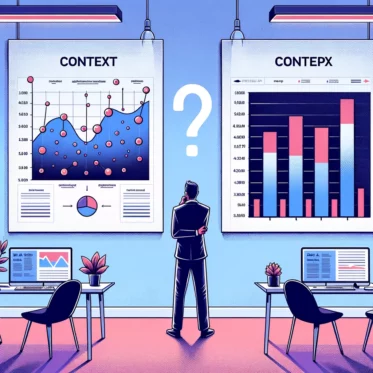Which Chart Type is Better? A Dangerous DataViz Pitfall.
I’ve just (almost) fallen into a dangerous data visualization pitfall. It was a usual LinkedIn discussion of a data visualization experiment. I realize that the charts being discussed were probably just a result of a randomly selected/created data sample for an experiment focused purely on visualization (I do that as well), but it showed a dangerous data visualization pitfall.
And we all can fall into it. Whether it’s a LinkedIn discussion or a real project, we’re distracted by various things, we are in a hurry, so it’s easier to start talking about a chart types right away.
But there is no data visualization out of context. It took me some time to realize I was writing a comment about which chart is visually better (easier to comprehend) without asking first about what we’re trying to measure and compare.
Then I started thinking, “Okay, the right (bar) chart would be better for comparing some $$$ values, the left (dot plot) chart would be better for comparing some ranks, and what do we have here? Are we trying to compare teams by the number of projects completed per team? Are we trying to measure something by comparing the number of completed projects with the number of planned projects? What? Forget about chart types and let’s talk about what we’re trying to measure, who needs that and why?”
Discussing chart types without considering the context can lead to ineffective or even deceptive visualizations. It’s incredibly important to step back from visualization for a while and grasp the metrics within a business context. Who requires the metrics and why they are needed? Only after understanding these aspects should we consider how to visualize them, if visualization of these metrics is indeed necessary.
Perhaps we require different metrics, or maybe we need to view these metrics from a different perspective, and the best answer to the question “which chart is better (to show metric M), A or B”, is “C or D (to show metric N)”.

